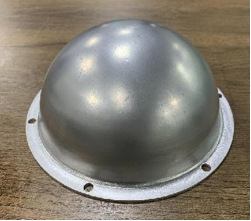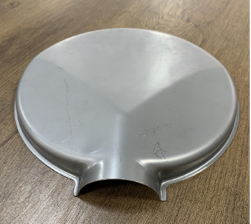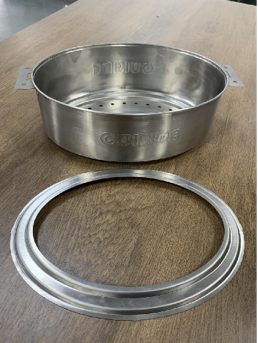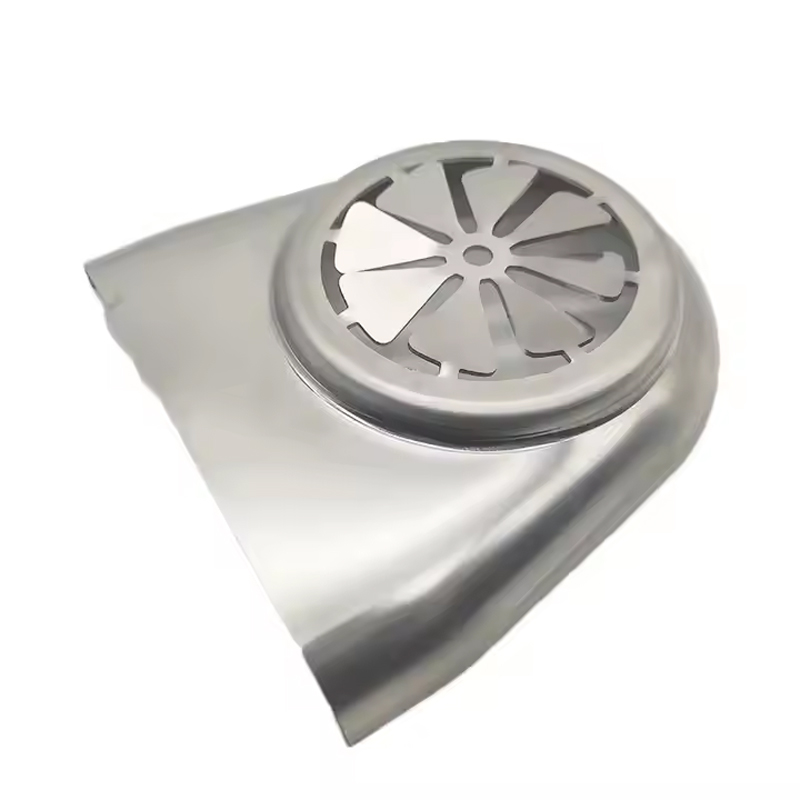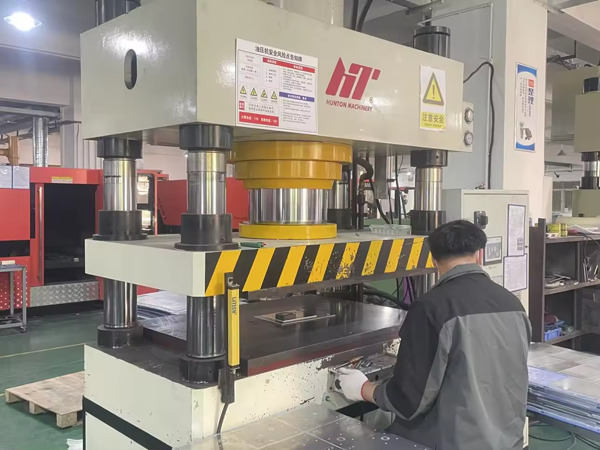Ensuring Quality in Deep-Drawn Metal Parts
Controlling the quality of deep-drawn parts involves a combination of proper design, material selection, process optimization, and inspection techniques. Here’s a structured approach to ensure high-quality deep-drawn components:
1. Material Selection & Preparation
-
Material Quality: Use high-quality, defect-free sheet metal with consistent thickness and mechanical properties (e.g., low carbon steel, stainless steel, aluminum).
-
Material Testing: Verify material properties (tensile strength, elongation, hardness) through testing.
-
Lubrication: Apply appropriate lubricants to reduce friction and prevent tearing or wrinkling.
2. Tooling & Die Design
-
Precision Dies: Ensure dies and punches are made from high-quality tool steel (e.g., D2, carbide) with proper hardness and surface finish.
-
Clearance Control: Maintain optimal clearance between punch and die (typically 10-15% of material thickness) to avoid cracks or excessive thinning.
-
Corner Radii: Use sufficient radii on dies and punches to prevent stress concentration and tearing.
3. Process Optimization
-
Blank Holder Pressure (BHF): Adjust to prevent wrinkling (too low) or tearing (too high).
-
Drawing Speed: Control to avoid excessive strain rates that may cause fractures.
-
Multi-Stage Drawing: For complex shapes, use multiple draws with intermediate annealing (if needed) to prevent work hardening.
-
Temperature Control: For challenging materials (e.g., titanium, magnesium), warm or hot drawing may be required.
4. In-Process Quality Checks
-
Thickness Measurement: Use ultrasonic or optical sensors to check wall thickness uniformity.
-
Wrinkle & Tear Inspection: Visually or via automated vision systems.
-
Dimensional Checks: Verify critical dimensions (diameter, depth, flange width) using CMM (Coordinate Measuring Machine) or go/no-go gauges.
5. Post-Forming Inspection
-
Surface Defects: Check for scratches, cracks, or orange peel effects.
-
Springback Evaluation: Measure part conformity after release from dies.
-
Metallurgical Testing: Conduct microscopic analysis for grain structure changes or micro-cracks (if high precision is required).
| Defect | Possible Cause | Solution |
|---|---|---|
| Wrinkling | Insufficient blank holder force | Increase BHF or use draw beads |
| Tearing | Excessive thinning, sharp corners | Optimize punch/die radii, reduce drawing ratio |
| Earing | Anisotropic material properties | Use better-grade sheet metal with uniform grain structure |
| Surface Scratches | Poor lubrication or die finish | Improve lubrication, polish dies |
7. Automation & Advanced Techniques
-
Simulation Software: Use FEM (Finite Element Method) tools like AutoForm or Dynaform to predict forming issues before production.
-
IoT & Sensors: Implement real-time monitoring of force, pressure, and temperature to detect deviations.
8. Final Quality Standards
-
Ensure compliance with industry standards (e.g., ISO 9001, ASTM, or customer-specific requirements).
-
Document process parameters for traceability and repeatability.
By systematically addressing these factors, manufacturers can achieve consistent, high-quality deep-drawn parts with minimal defects.
